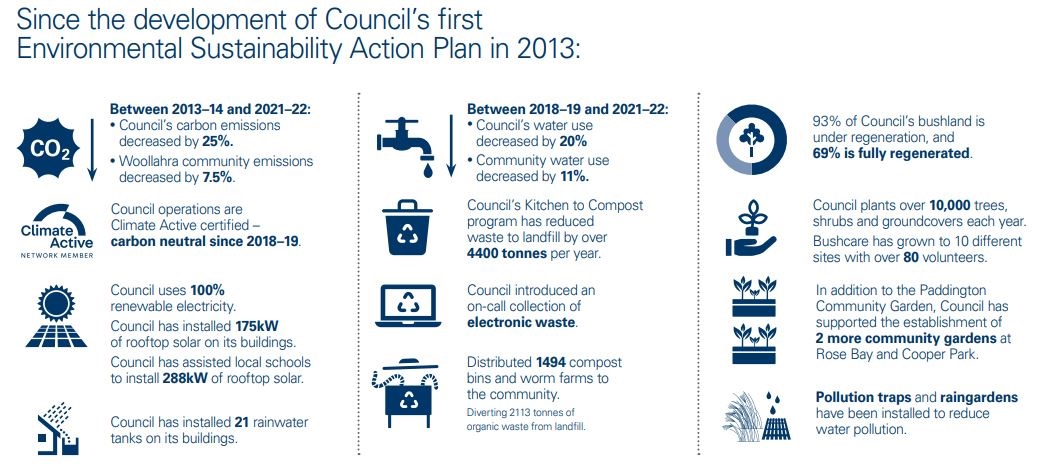Our Action Plan
Our Environmental Targets
Woollahra Council has long been committed to protecting our environment, operating as sustainably as possible, and taking action on climate change.
Our environmental planning processes help us:
- Reduce greenhouse gas emissions and water use, and adapt to the impacts of climate change.
- Protect and enhance biodiversity.
- Improve the quality and health of our waterways.
- Reduce the amount of waste generated and sent to landfill.
- Support our community to live more sustainably.
In 2018 Council adopted Woollahra - 2030 Our community, our place, our plan(PDF, 15MB). Our progress towards the environmental targets in this plan are noted in Council's Annual Report. The graphic below provides a snapshot of our sustainability achievements.

Key Plans, Strategies and Reports
All our plans and strategies undergo a process of public consultation to allow the community to have input into the way our extensive natural resources and spaces are managed.
Subscribe to our Environment e-news
Sign up to Our Environment e-newsletter to stay informed about environmental news and upcoming consultation opportunities.
Subscribe